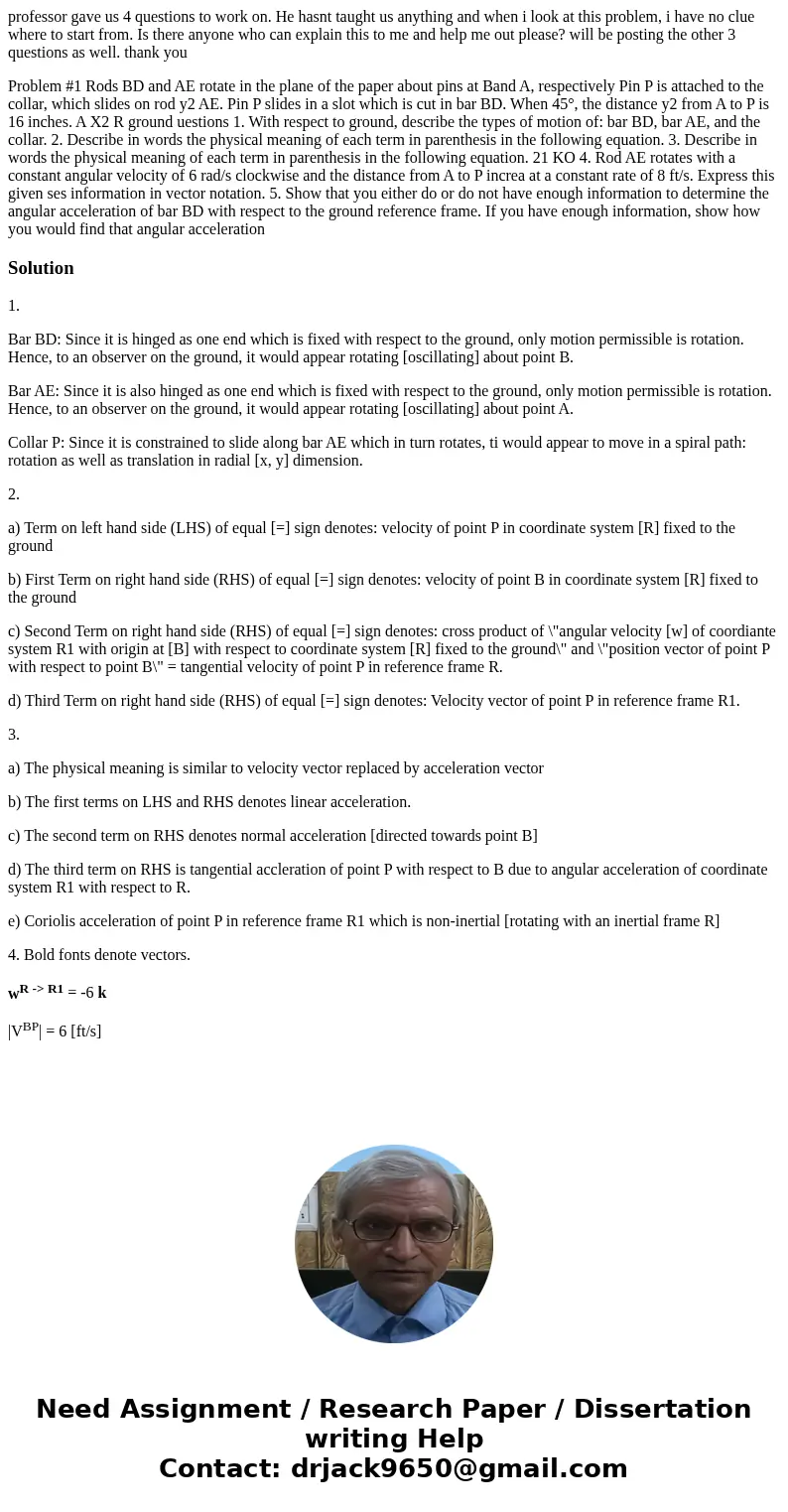professor gave us 4 questions to work on He hasnt taught us
professor gave us 4 questions to work on. He hasnt taught us anything and when i look at this problem, i have no clue where to start from. Is there anyone who can explain this to me and help me out please? will be posting the other 3 questions as well. thank you
Problem #1 Rods BD and AE rotate in the plane of the paper about pins at Band A, respectively Pin P is attached to the collar, which slides on rod y2 AE. Pin P slides in a slot which is cut in bar BD. When 45°, the distance y2 from A to P is 16 inches. A X2 R ground uestions 1. With respect to ground, describe the types of motion of: bar BD, bar AE, and the collar. 2. Describe in words the physical meaning of each term in parenthesis in the following equation. 3. Describe in words the physical meaning of each term in parenthesis in the following equation. 21 KO 4. Rod AE rotates with a constant angular velocity of 6 rad/s clockwise and the distance from A to P increa at a constant rate of 8 ft/s. Express this given ses information in vector notation. 5. Show that you either do or do not have enough information to determine the angular acceleration of bar BD with respect to the ground reference frame. If you have enough information, show how you would find that angular accelerationSolution
1.
Bar BD: Since it is hinged as one end which is fixed with respect to the ground, only motion permissible is rotation. Hence, to an observer on the ground, it would appear rotating [oscillating] about point B.
Bar AE: Since it is also hinged as one end which is fixed with respect to the ground, only motion permissible is rotation. Hence, to an observer on the ground, it would appear rotating [oscillating] about point A.
Collar P: Since it is constrained to slide along bar AE which in turn rotates, ti would appear to move in a spiral path: rotation as well as translation in radial [x, y] dimension.
2.
a) Term on left hand side (LHS) of equal [=] sign denotes: velocity of point P in coordinate system [R] fixed to the ground
b) First Term on right hand side (RHS) of equal [=] sign denotes: velocity of point B in coordinate system [R] fixed to the ground
c) Second Term on right hand side (RHS) of equal [=] sign denotes: cross product of \"angular velocity [w] of coordiante system R1 with origin at [B] with respect to coordinate system [R] fixed to the ground\" and \"position vector of point P with respect to point B\" = tangential velocity of point P in reference frame R.
d) Third Term on right hand side (RHS) of equal [=] sign denotes: Velocity vector of point P in reference frame R1.
3.
a) The physical meaning is similar to velocity vector replaced by acceleration vector
b) The first terms on LHS and RHS denotes linear acceleration.
c) The second term on RHS denotes normal acceleration [directed towards point B]
d) The third term on RHS is tangential accleration of point P with respect to B due to angular acceleration of coordinate system R1 with respect to R.
e) Coriolis acceleration of point P in reference frame R1 which is non-inertial [rotating with an inertial frame R]
4. Bold fonts denote vectors.
wR -> R1 = -6 k
|VBP| = 6 [ft/s]

 Homework Sourse
Homework Sourse